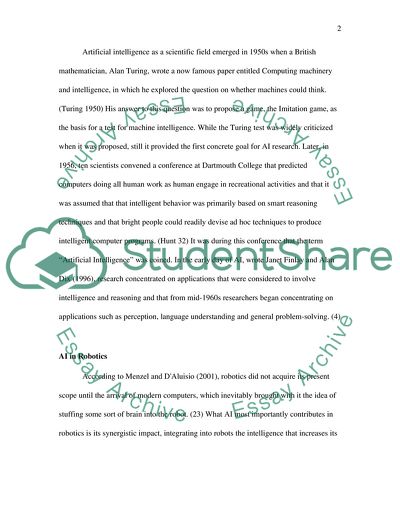Cite this document
(The Role of Artificial Intelligence in Robotics Essay Example | Topics and Well Written Essays - 1250 words, n.d.)
The Role of Artificial Intelligence in Robotics Essay Example | Topics and Well Written Essays - 1250 words. https://studentshare.org/technology/1716552-the-role-of-artificial-intelligence-in-robotics
The Role of Artificial Intelligence in Robotics Essay Example | Topics and Well Written Essays - 1250 words. https://studentshare.org/technology/1716552-the-role-of-artificial-intelligence-in-robotics
(The Role of Artificial Intelligence in Robotics Essay Example | Topics and Well Written Essays - 1250 Words)
The Role of Artificial Intelligence in Robotics Essay Example | Topics and Well Written Essays - 1250 Words. https://studentshare.org/technology/1716552-the-role-of-artificial-intelligence-in-robotics.
The Role of Artificial Intelligence in Robotics Essay Example | Topics and Well Written Essays - 1250 Words. https://studentshare.org/technology/1716552-the-role-of-artificial-intelligence-in-robotics.
“The Role of Artificial Intelligence in Robotics Essay Example | Topics and Well Written Essays - 1250 Words”. https://studentshare.org/technology/1716552-the-role-of-artificial-intelligence-in-robotics.


